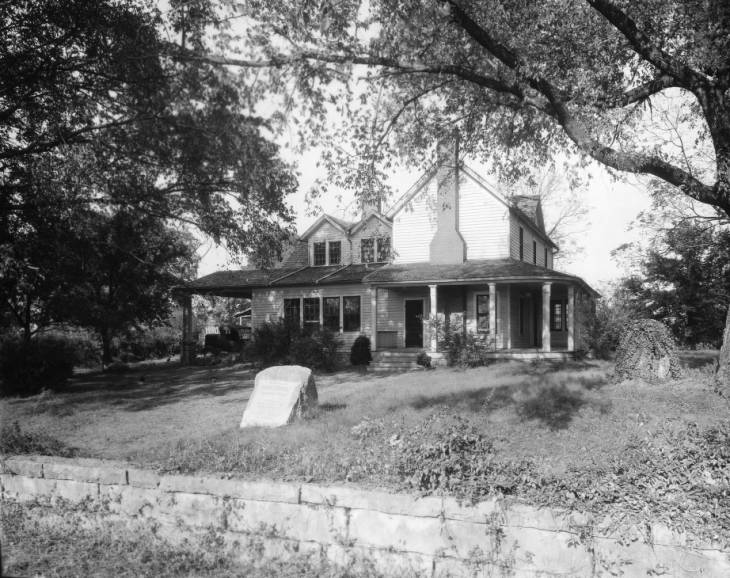Jean Russell (1867-1961), native of Concord/Farragut, teacher and local historian, was the daughter of Samuel Love Russell. It was her father who established the village of Lovell in the area now better known as Lovell Road. Her maternal uncle, James Martin Rodgers, who realized the value of river traffic for import and export of goods, is credited with laying out the community of Concord into 55 lots and naming it Concord in 1852.
But perhaps one of the lesser known connections and historical trivia of the Concord/Farragut community is connected to that of her great grandfather, Abram Low (Lowe).

Jean Russell: Her writings included “Some Pioneer Settlers of Farragut Community,” (The Admiral, Farragut High School, 1928)
The Low family lived near the birthplace of Admiral David Glasgow Farragut where it is believed that Admiral Farragut’s father, George Farragut, operated a ferry as early as April 1797. Today referred to as Lowe’s Ferry, it was bought by Abram Low on April 30, 1807, and he operated the ferry until his death in 1830. Thereafter, the Low family carried on the business for nearly 100 years and during the War Between the States, it furnished an important communicating link for troops.
Lowe’s Ferry served as transportation across the Tennessee River from Knox County to Friendsville in Blount County. Since 1797, one year after Tennessee became a state, the Friends Society, more commonly known as the Quakers, began to organize opposition to slavery and the Friendsville inhabitants played an integral part in freeing slaves and helping young men escape the Confederate draft.
Since individuals could be arrested and tried for aiding and abetting fugitives, information for safe passage and hide-away houses was relayed via secret communication by former slaves and trusted friends to those enslaved individuals as they traveled north. This unmapped passage was known as the Underground Railroad.
According to Ms. Russell’s writings, Abram and Mary Martin Low reared to maturity a family of 11 children, who were socially prominent and married among the best families of their acquaintance. The Low homestead was noted for its hospitality, which was bestowed alike on rich and poor. And through obeying the scriptural injunction to “be careful to entertain strangers,” they were honored by sometimes having the privilege of entertaining notables, if not “angels.”

Gravesite of William Forster: The cemetery is located behind the Friends Meeting House on West Hill Avenue, Friendsville, Tennessee
It was in October 1853 that Edward Forster, Quaker minister and Abolitionist from England, had been persuaded at the request of members of the Quaker church to travel to the United States to address President Franklin Pierce and governors of the states in order to influence the Abolitionist cause.
Samuel Donaldson Low, youngest son of Abram, was operating the family ferry business when he entertained Mr. Forster as house guest during his travels through Tennessee. While a guest, Forster became critically ill and was cared for by the Low family until he died on Jan. 27, 1854. His body was taken by ferry to Friendsville where he was buried at the Friends Meeting House cemetery. Perhaps not by coincidence, a cave that was close to the church served as one of the stations along the Underground Railroad.

William Forster: Cropped excerpt from a picture that was commissioned showing William Forster as a member of the new British and Foreign Anti-Slavery Society which was formed in 1839 at an important international convention in June 1840.
Historical records indicate that Forster’s son traveled from England some 20 years later to express his gratitude to the Low family for their kindness to his father. Mr. Forster’s death was widely reported in both America and Great Britain and the fireside poet, John Greenleaf Whittier, immortalized him in a poem titled simply, “William Forster.”
Publications by Forster include: “A Christian Exhortation to Sailors,” 1813, often reprinted, and translated into French; “Recent Intelligence from Van Diemen’s Land,” 1831; and “A Salutation of Christian Love,” issued by Forster’s brother Josiah in 1860.
Mona Isbell Smith is a retired computer systems analyst who enjoys freelancing.

